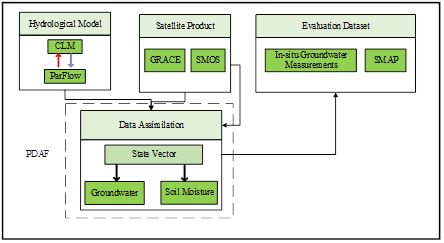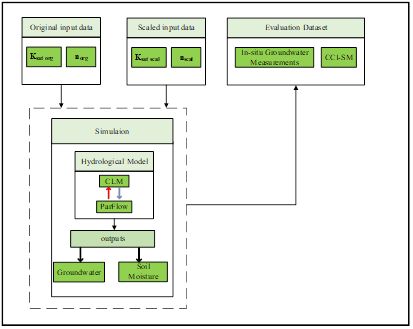Le prix spécial ÉCOLOGIE 2023 de la fondation saint Thomas est attribué au Dr. Samira Soltani. Ces travaux de thèse étaient encadrés par le Dr. MArwan Fahs. Le résumé de la thèse du Dr. Samira Soltani est le suivant (en anglais):
This thesis focuses on developing effective techniques such as hydrological modeling to monitor and predict water storage changes. However, inaccuracies and uncertainties in different aspects of modeling, due to simplification of meteorological physical processes, data limitations and inaccurate climate forcing data limit the reliability of hydrological models. To improve the reliability of hydrological models, the thesis proposes the integration of satellite remote sensing data, specifically Terrestrial Water Storage (TWS) from GRACE and soil moisture data from SMOS, through a process known as Data Assimilation (DA). The primary objective is to enhance predictions of sub-surface water storage while exploring the challenges and limitations of assimilating single versus multiple sources of satellite data. Fig.1 shows the outline of this thesis.
Fig.1 Outline of the thesis
The thesis outlines a comprehensive strategy, including GRACE-only assimilation, SMOS-only assimilation, and joint assimilation of both datasets (multivariate DA). It also addresses how to handle errors in GRACE TWS data, such as correlated noise and spatial leakage, to maximize their potential. The author discusses the benefits and limitations of these data assimilation strategies, emphasizing the potential of multi-mission satellite data for hydrological applications.
The data assimilation is applied to an integrated two-way coupled subsurface-surface hydrological model called ParFlow-CLM, using the Ensemble Kalman Filter (EnKF). The thesis underscores the challenges of simulating interactions between subsurface and surface water, which ParFlow-CLM can handle.
The work is structured into several steps: first, a review of existing studies on GRACE TWS data assimilation in hydrological models, highlighting their limitations and progress. Second, an investigation into the use of GRACE data for estimating water budgets, focusing on the central basin of Iran. Third, a proposal to improve soil moisture and groundwater-level predictions in ParFlow-CLM through adjustments to model parameters, tested in the Upper Rhine basin. Fig. 2 shows the outline of this step. The thesis emphasizes the importance of modifying model parametrization to account for scale effects before applying multivariate assimilation techniques. Finally, the performance of multivariate data assimilation is evaluated in three methodologies, using a case study in Iran and incorporating various datasets, including in-situ measurements and remote sensing observations.
Fig. 2 Outline of improving soil moisture and groundwater-level predictions in ParFlow-CLM through adjustments to model parameters.


